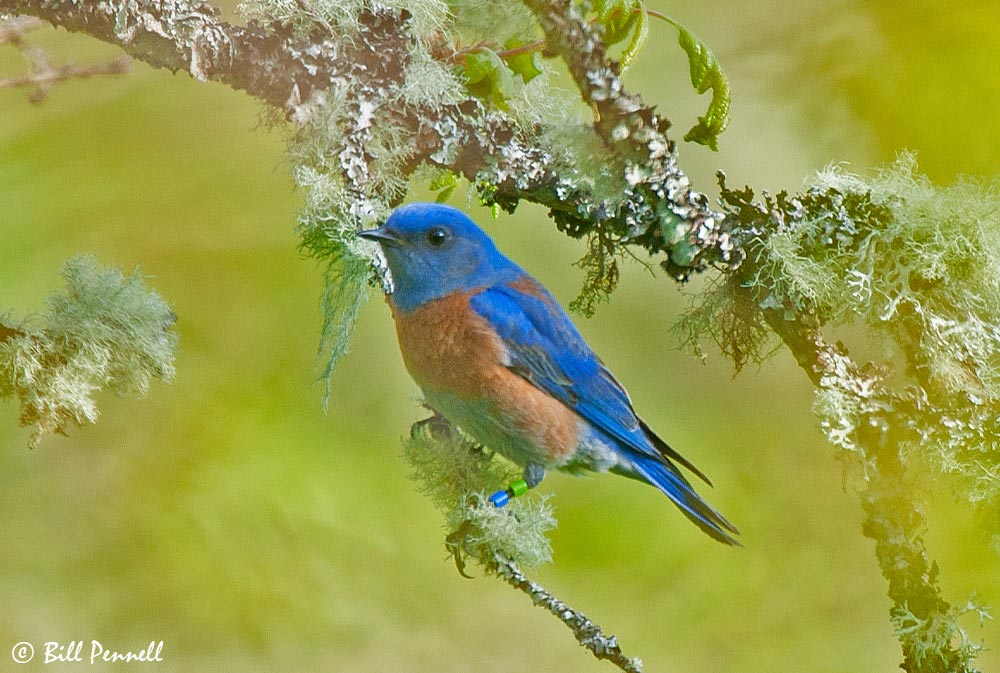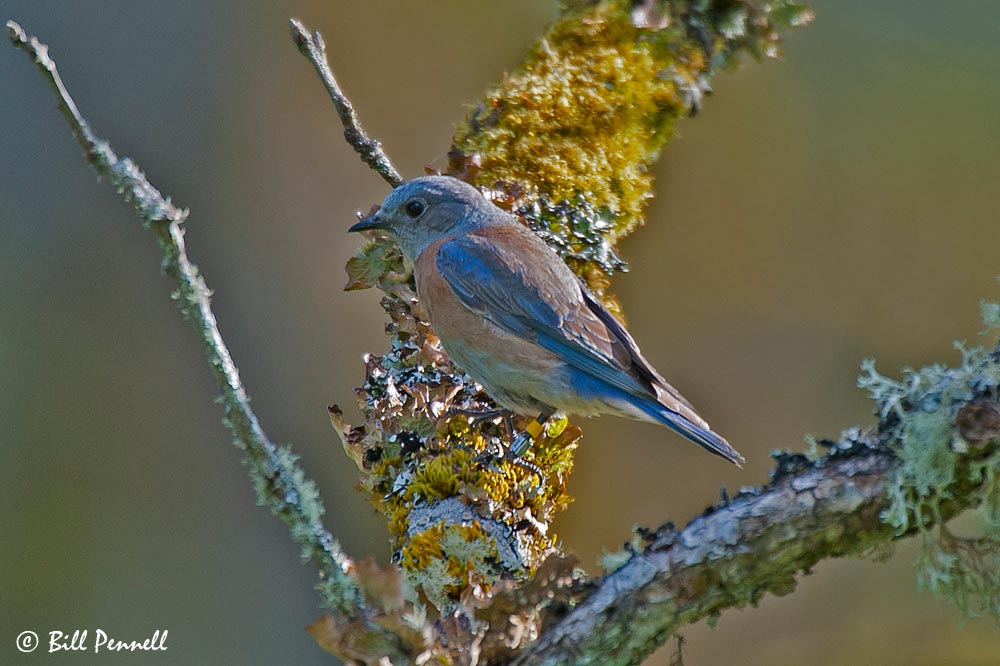Every now and then a western or a mountain bluebird makes an appearance here in the Comox Valley during the winter and early spring. A single mountain bluebird turned up at YQQ in April, 2012 and two more turned up on the Comox Valley Nature May, 2011 spring bird count. Two western bluebirds were reported north of Courtenay in April, 2009. If a GOERT western bluebird reintroduction project further south in the Cowichan Valley is successful, we may start to see western bluebirds more regularly on this part of Vancouver Island.
Year two of the Bring Back the Bluebirds Project is underway, with three pairs of western bluebirds slated to be released this week from aviaries in the Somenos-Quamichan Lake area. In March, the birds were brought from Washington State and, after a temporary holding period, are being released into the wild to find suitable nesting locations.
This year, the project plans to translocate 10 pairs of bluebirds in total, some of them with nestlings. Three more pairs are scheduled to arrive later this week. If the birds nest and raise young successfully this summer and return to the Cowichan Valley next spring, they will be a critical foundation for re-building a local bluebird population. Last year one pair successfully nested and raised four young—the first Western Bluebirds known to have hatched on Vancouver Island since 1995.
Project technician Julia Daly monitors the birds regularly for health and signs of breeding activity. “One female has shown interest in the nestbox inside the aviary, poking her head inside every 10 minutes or so. The male peeks into the nestbox as well, but less frequently. On the weekend, the birds were very relaxed and perched close to one another on a high branch, soaking in the warm sun rays together for most of my 40-minute observation period.” This interest in nestboxes is a good sign that the birds are getting ready to breed.
The five-year Bring Back the Bluebirds Project, led by the Garry Oak Ecosystems Recovery Team, with partners Ecostudies Institute, the Province of BC, Nature Conservancy of Canada, and Cowichan Valley Naturalists, aims to re-establish a self-sustaining breeding population on southeastern Vancouver Island and the southern Gulf Islands.
Western Bluebirds are one of more than 100 species-at-risk in Garry Oak and associated ecosystems. Once common on Vancouver Island and the southern Gulf Islands, their population began to decline in the 1950s. Since 1995, they had not been known to nest successfully in this region (until last year’s project success), and are considered extirpated (locally extinct). One reason for their disappearance is a lack of available nesting cavities due to loss of Garry Oak habitat, removal of standing dead trees, and competition with alien invasive birds: European Starlings and House Sparrows. Western Bluebirds are secondary cavity nesters, meaning that they cannot build their own nest cavities, and depend on old woodpecker cavities, natural holes in trees, or nestboxes.
To learn more about and support the Bring Back the Bluebirds Project, see www.goert.ca/bluebird. Project update courtesy of Garry Oak Ecosystems Recovery Team, photos courtesy of Bill Pennell.





I hope the bluebirds are able to successfully raise and fledge young this year!